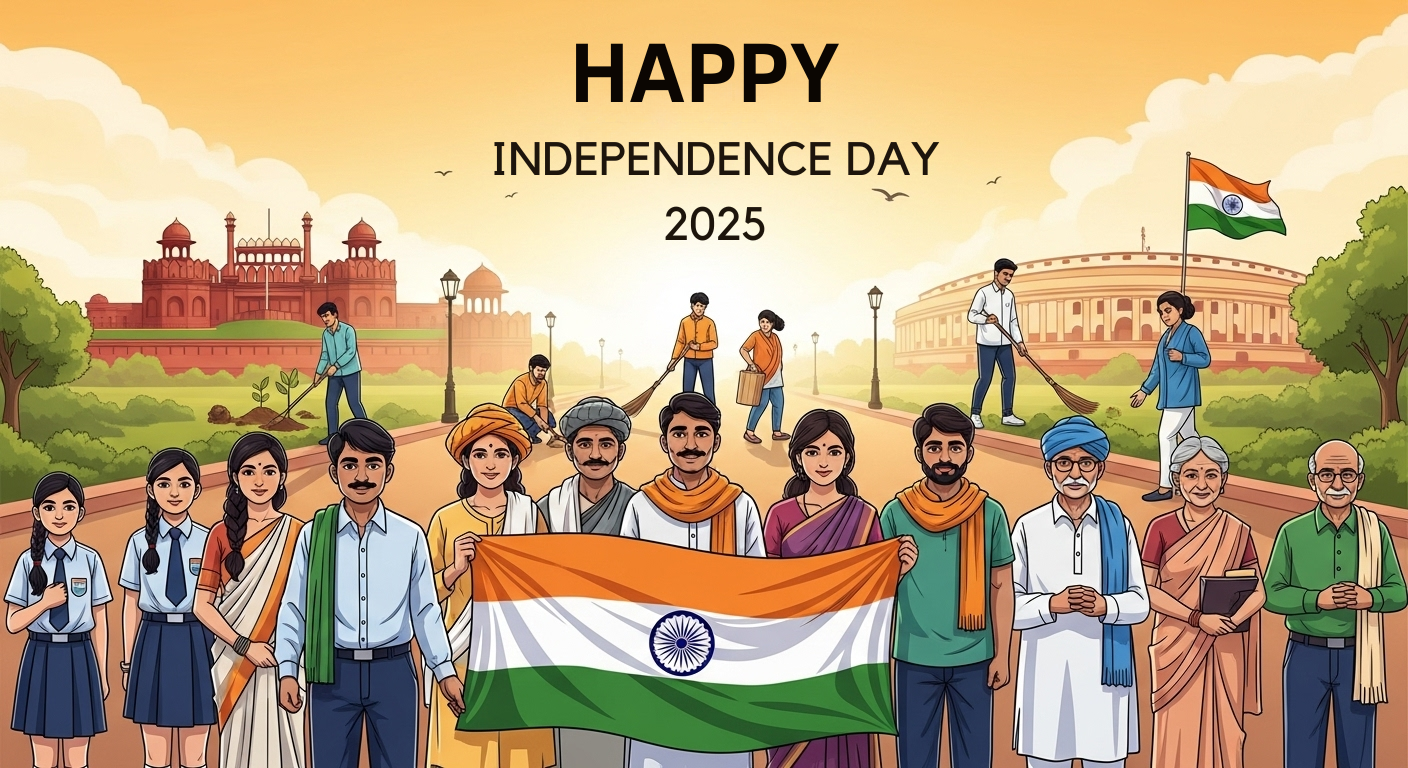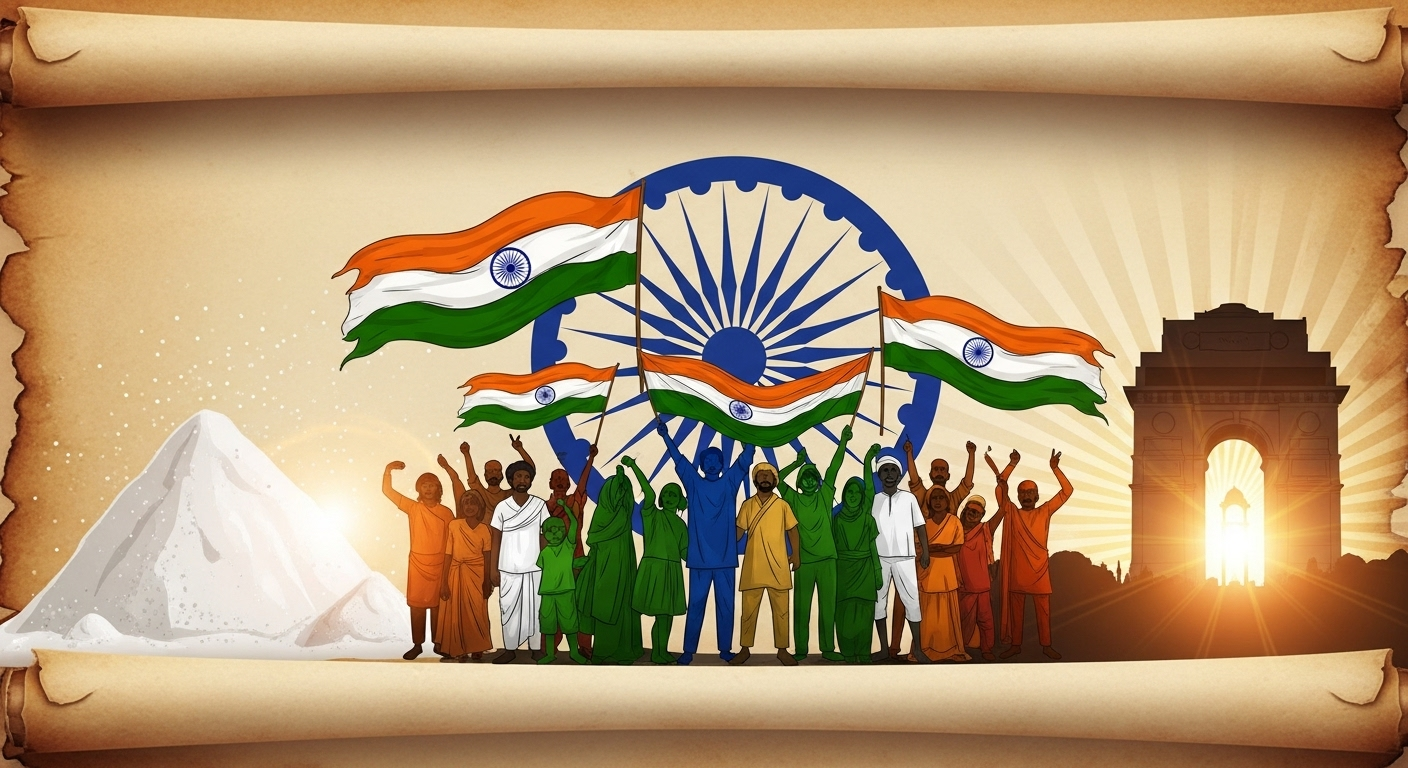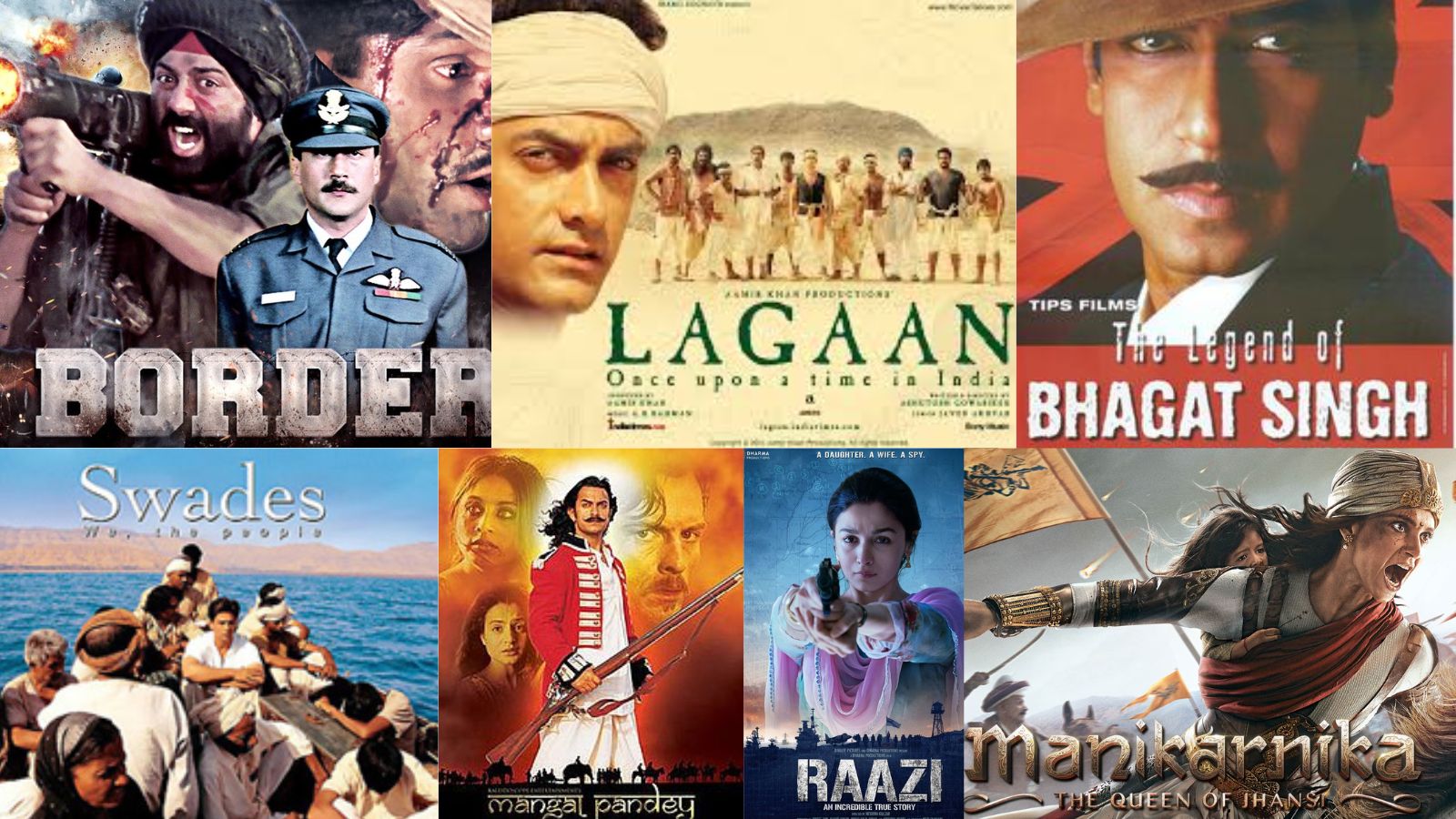Independence Day 2025 is a moment to honor India’s freedom story and turn remembrance into responsibility. Rather than treating 15 August as a routine holiday, this professional guide helps you shape meaningful observances with clear context from Independence Day history, thoughtfully written Independence Day wishes, curated Independence Day quotes, practical Independence Day celebration ideas, and recommendations for patriotic movies that educate as they inspire.
Use this section as copy-paste web content for a blog, brand newsroom, school magazine, community portal, or corporate intranet. The paragraphs are intentionally long-form to improve readability, depth, and SEO, with natural occurrences of target phrases such as “Independence Day 2025”, “Independence Day quotes”, “Independence Day wishes”, “Independence Day celebration ideas”, “Independence Day history”, and “patriotic movies”.
Why India Marks Independence Day 2025

Independence Day 2025 commemorates the 78th anniversary of India’s transition from colonial rule to sovereign democracy. That transition was not a single event but a cumulative achievement of citizens who believed that dignity, representation, and justice must be available to all. By calling the occasion “Indian Independence Day 2025” and not merely a generic anniversary, we frame the observance as a living charter for the rule of law, pluralism, and constitutional duty. Each household, classroom, and workplace that engages the date with sincerity contributes to a culture where liberty is protected not just by courts and Parliament but by everyday choices: listening across differences, paying fair wages, keeping public spaces clean, and participating in civic processes.
When organisations publish editorials or host events around Independence Day 2025, clarity helps: state why the observance matters this year, align the programme with values such as integrity and inclusion, and conclude with a simple call-to-action that invites readers or attendees to adopt one positive habit for the next twelve months. This link between commemoration and measurable behaviour is what turns a ceremonial morning into a year-long practice of citizenship.
Independence Day History: A Concise Civic Timeline

The most effective retellings of Independence Day history are concise and human. Begin with the 1857 uprising, not as a detached fact but as evidence that resistance to injustice has deep roots. Explain how, by 1885, the Indian National Congress provided a forum for representation, debate, and strategy. Describe how watershed moments—Jallianwala Bagh in 1919, the 1930 Salt March, and the 1942 Quit India call—reshaped public imagination and made self-rule non-negotiable. Acknowledge complexity: non-violent campaigns and revolutionary actions existed in tension yet often pointed toward a shared goal of dignity and self-determination.
Close the narrative with the midnight transfer of power and the promise contained in Nehru’s “Tryst with Destiny,” then connect that promise to the Constitution’s coming into effect in 1950. This structure gives readers enough of the Independence Day history arc to understand why Independence Day 2025 is more than a date—it is a reminder that freedom survives when institutions are strengthened and citizens act with integrity.
Inspiring Independence Day Quotes (With Context)
Short slogans travel fast, but contextualised Independence Day quotes travel further because they teach. Pair a line with one sentence on who said it and why it matters in 2025. For instance, “It always seems impossible until it’s done” gains power when you note Nelson Mandela’s struggle against apartheid and link it to India’s non-violent mobilisation. Likewise, Abraham Lincoln’s warning that those who deny freedom to others do not deserve it themselves can be connected to a contemporary commitment to equal rights and due process. When you publish a carousel or an image caption with carefully framed Independence Day quotes, you convert a shareable asset into a miniature civic lesson.
Many audiences appreciate Indian mottoes as well—“Vande Mataram”, “Jai Hind”, and “Satyameva Jayate”. Add one clear sentence beneath each cue explaining its origin and ethical significance. That one sentence of context prevents the phrase from being an empty chant and ensures your Independence Day 2025 content is remembered for substance as much as sentiment.
Writing Independence Day Wishes that Feel Genuine
Readers can spot generic messages instantly, so craft Independence Day wishes that match your relationship with the audience. For family and friends, a warm note that acknowledges sacrifice and hopes for a kinder, more prosperous India feels personal. For professional contexts, keep the tone respectful and focused on constitutional values: “Warm wishes on Independence Day 2025. May our decisions reflect fairness, our work advance opportunity, and our actions strengthen democratic trust.” For a public-facing brand, anchor Independence Day wishes to a tangible initiative—scholarships, accessibility upgrades, a library drive, or digital-safety workshops—so the greeting demonstrates commitment beyond words.
A useful technique is the “wish + micro-action” pairing. Express pride in India, then suggest one clear step—mentor a student, plant a sapling, donate books, or commit to lawful driving. When Independence Day 2025 greetings contain a practical action, the post is more likely to be shared, and the impact extends beyond that morning’s ceremony.
Independence Day Celebration Ideas You Can Implement
Good Independence Day celebration ideas combine culture, service, and learning. A home gathering can start with the Preamble read aloud, followed by a screening of a short documentary and a five-minute story about a local freedom fighter. A school programme can transform corridors into a timeline that students “walk through”, moving from 1857 to 1950 with photographs and two-line captions. Colleges can frame the day around debates on rights and responsibilities, asking participants to apply constitutional principles to real-world dilemmas such as privacy, environmental stewardship, and equal opportunity.
Workplaces thrive on purposeful structure: begin with a dignified flag hoisting and a two-minute silence; invite a historian or lawyer to deliver a brief talk on rights and duties; and conclude with a community action such as a book donation drive or a neighbourhood clean-up. Housing societies can organise heritage walks, multilingual poetry readings, and oral-history booths where seniors record memories; later, the clips can be edited into a community archive. All of these Independence Day celebration ideas emphasise that celebration is not a performance but participation in the life of the republic.
Respecting the Tricolour: Practical Guidance from the Flag Code

The national emblem should be displayed with care, and the Flag Code of India provides that guidance. When preparing Independence Day 2025 visuals, ensure the flag never touches the ground, is not used as apparel or drapery, and is not printed on disposable items. After events conclude, fold and store the flag properly or follow prescribed protocols for respectful disposal. If you share photos or reels, add short captions that explain a key rule from the Flag Code; these micro-lessons help audiences learn while they scroll and keep the focus on dignity rather than spectacle.
Decor can still be vibrant without compromising respect. Choose eco-friendly materials for tricolour motifs—paper buntings, cloth banners, or floral installations—and accompany displays with a small placard that summarises proper handling. The combination of beauty and guidance elevates the tone of Independence Day 2025 across schools, offices, and public venues.
Patriotic Movies that Combine Emotion and Insight

Carefully chosen patriotic movies bring context to commemorations. “The Legend of Bhagat Singh” explores youthful clarity and sacrifice; “Swades” reframes patriotism as solving local problems with humility; “Shershaah” honours bravery with restraint; “URI: The Surgical Strike” highlights discipline and teamwork; and “Lagaan” dramatizes collective resolve. Before a screening, offer two prompts—Which civic virtue does the story model, and how might we apply that virtue in our own circles this year? Framing patriotic movies with reflective questions turns entertainment into civic learning and makes your Independence Day 2025 content memorable for the right reasons.
For educational blogs, include a short paragraph on film literacy: distinguish between dramatization and documented fact, mention the historical context briefly, and recommend one reliable reading for viewers who want to go deeper. This extra effort improves trust and keeps your audience engaged beyond the closing credits.
Storytelling that Brings Freedom-Struggle Episodes Alive
Audiences retain stories better than lists, so consider publishing one or two “freedom struggle stories” each year. Describe the salt air at Dandi, the stunned quiet after the shots at Amritsar, or the stillness of a courtroom before a verdict in a sedition trial. Add a final paragraph that connects the episode to the present—respecting the queue, voting responsibly, or reporting misinformation—so readers see how Independence Day 2025 values can be practiced on ordinary weekdays. This narrative approach satisfies readers, teachers, and search engines because it blends relevance, originality, and topical depth without repeating generic words.
If you maintain a brand blog, invite employees or community members to contribute short reminiscences of prior observances. A curated set of first-person paragraphs—two hundred words each—creates an oral-history texture that algorithms reward and readers appreciate.
Professional Tone for Social Platforms
Social posts for Independence Day 2025 should be brief yet substantive. Replace generic captions with a line that ties pride to practice: “Honouring freedom by advancing accessibility in our products,” or “Celebrating with a scholarship fund for first-generation learners.” Use alternative phrasings like “15 August 2025 observance” or “India’s independence anniversary” to avoid repetitive wording while keeping relevance high. Where images are used, add accessible alt text—“students reading the Preamble”, “community clean-up at dawn”, “heritage walk through old city”—to improve inclusivity and discoverability.
When publishing carousels of Independence Day quotes or reels from a ceremony, include one slide that cites a Flag Code guideline or a mini timeline from Independence Day history. Teaching while celebrating is the surest way to earn trust and long-term readership.
Sample Independence Day Wishes for Different Audiences
For families and friends: “Warm wishes on Independence Day 2025. May our homes be places of kindness, learning, and courage—the everyday foundations of a strong republic.” This tone feels personal and hopeful without being sentimental.
For colleagues and clients: “Greetings on Independence Day 2025. May our work reflect fairness, our partnerships create opportunity, and our innovations serve the public good.” The message suits email banners, LinkedIn posts, and leadership notes.
For public-facing brands: “On Independence Day 2025 we honour the freedom struggle by supporting a year-long library drive and digital-safety workshops. Join us.” When Independence Day wishes are paired with measurable initiatives, authenticity follows naturally.
Education Corner: Making Independence Day History Engaging
Teachers, librarians, and mentors can bring Independence Day history alive with simple activities that fit a twenty-minute slot. Select one paragraph from a primary source speech, one period photograph, and one newspaper headline; ask learners to identify the audience, purpose, and likely impact in three sentences. This exercise requires no elaborate setup yet produces insight, discussion, and retention. For advanced groups, a mini-seminar on fundamental rights or federalism connects the freedom struggle to the living Constitution and makes Independence Day 2025 intellectually engaging.
Schools and colleges can publish their best student reflections as short op-eds. When young writers summarise what liberty means in their neighbourhoods—safer streets, cleaner parks, honest exams, kinder classrooms—the observance becomes local and actionable, exactly what a modern civic festival should achieve.
Conclusion: Turning Commemoration into Daily Citizenship
The purpose of Independence Day 2025 is fulfilled when ceremony flows into habit. After the anthem, carry the tone into the week: keep your neighbourhood clean, be courteous in traffic, support small businesses, tip fairly, read reliable news, and help someone navigate a government service. These are small acts, yet they uphold the large idea that freedom thrives when citizens act with care. If a single practice from this guide—sharing contextualised Independence Day quotes, sending substantive Independence Day wishes, hosting reflective screenings of patriotic movies, or implementing one of the Independence Day celebration ideas—becomes part of your routine, the values behind Independence Day 2025 will endure beyond the morning’s ceremony.
FAQs on Independence Day 2025
Why is Independence Day 2025 significant?
It marks seventy-eight years since India regained self-rule. Observing the date with learning, service, and dignity links history to current civic life and keeps the ideals of the Constitution visible.
How can families celebrate meaningfully?
Read the Preamble together, watch a short documentary, record elders’ memories, and choose one local act of service. These approaches turn Independence Day 2025 into a family tradition rooted in learning and kindness.
Can the national flag be part of decorations?
Yes, but follow the Flag Code of India: display the emblem in a position of honour, never let it touch the ground, avoid apparel and disposable items, and store or dispose of it respectfully after use.
What role do schools and offices play?
Institutions can turn ceremony into continuity—heritage displays, expert talks, and CSR initiatives—so the observance leads to measurable community benefit and a deeper understanding of Independence Day history.
Powered by Froala Editor
